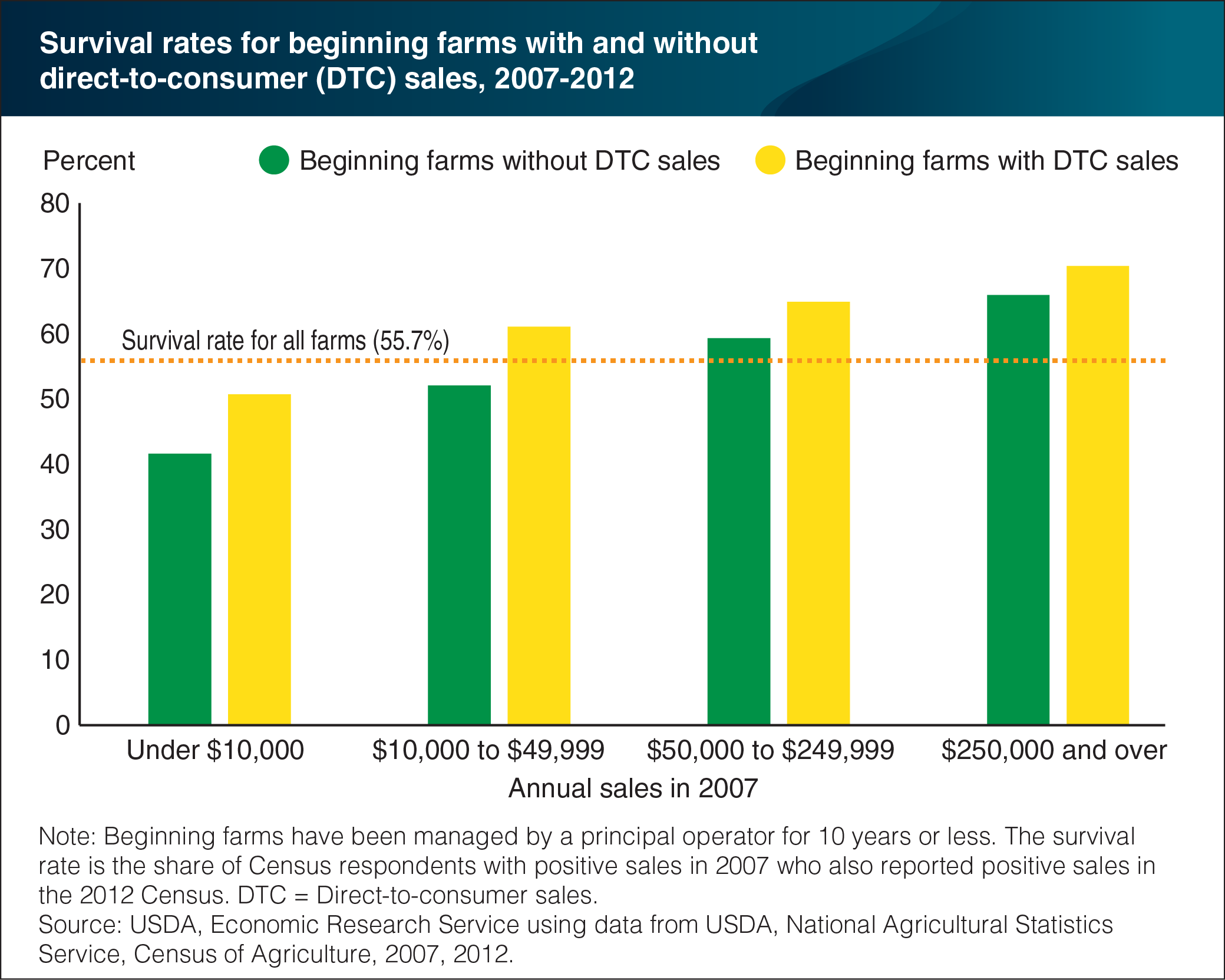Beginning farms that sell directly to consumers more likely to survive
- by Nigel Key
- 10/4/2016

Beginning farmers, those who have managed a farm or ranch for 10 years or less, generally have lower rates of business survival than more established farm operators. According to Census of Agriculture data, only 48.1 percent of beginning farmers with positive sales in 2007 also reported positive sales in 2012—compared with 55.7 percent of all farms. Running a larger operation and selling directly to consumers (at roadside stands, farmers’ markets, and so on) may help beginning farmers remain in business. As a whole, beginning farms with direct-to-consumer (DTC) sales had a 54.3 percent survival rate, while 47.4 percent of those without DTC sales survived. This pattern holds across operations of different sizes, as defined by annual sales. The difference in survival rates was substantial—ranging from 9 percentage points for the smallest farms to about 4 percentage points for the largest. Farmers with DTC sales can usually get a higher product price and reach a certain level of sales with less machinery and land. In turn, these farmers may have a more stable income and need to borrow less—further increasing chances of survival. This chart appeared in the September 2016 Amber Waves finding, “For Beginning Farmers, Business Survival Rates Increase With Scale and With Direct Sales to Consumers."


